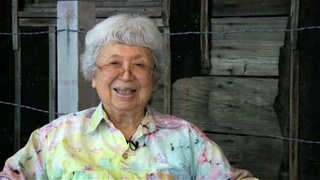Interviews
Drawing on paper napkins
I started drawing and painting about the same time I started playing piano, maybe even earlier. My parents would give me like a pen and a napkin at dinner when we went out to eat basically to keep me quiet. They realized that if I got a pen and something to draw on, since I was a little kid, it didn’t take me very long to eat and they’d be sitting there at the restaurant and I’d be fidgeting and screwing around and wanting to leave and as soon as I started drawing, I’d mellow out and they could finish the rest of their dinner in peace. So it was more of a practical thing than anything but they realized that I really liked to do it. So I’ve pretty much been drawing as long as I could hold a pencil.
Date: January 16, 2006
Location: California, US
Interviewer: Chris Komai and John Esaki
Contributed by: Watase Media Arts Center, Japanese American National Museum




